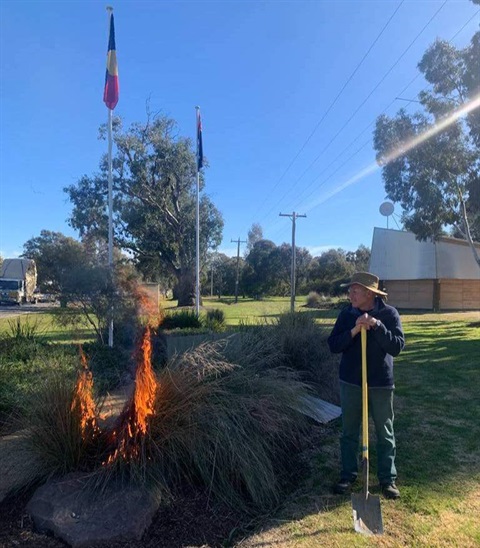Indigenous Plant Burning
Published on 29 July 2022

Native Poa Grass at the Mansfield Station Precinct has been back burned instead of cut with Council collaborating with Gadhaba Local Aboriginal Network to implement the Indigenous practice.
Vern Simsen, descendant of the Wiradjuri and member of Gadhaba Local Aboriginal Network, said the tradition of grass burning was important for healthier regrowth and maintenance of the grass.
“We are delighted that Council care about the management of these grasses in the traditional way, drawing on thousands of years of knowledge of the Taungurung People,” said Mr Simsen.
The burning of the Poa grass back to its crown promotes healthier regrowth and maintenance of the grasses.
Mayor Cr James Tehan said Council was pleased to be working with our local Indigenous population to learn and practice these land management strategies.
“Gadhaba suggested that the practice of cutting the grasses could be changed to burning off, bringing us in line with best practice to encourage new growth. Our Parks and Gardens team worked with Gadhaba to accommodate the practice,” said Cr Tehan.
“We’re pleased to be able to honour the traditions and knowledge of the Taungurung people in this practice.”
Poa labillardieri is Australian native plant, Poa lab or Common Tussock Grass (Poa labillardieri) is a clumping grass that grows up to 1m high and 70cm wide.
Poa labillardieri without any maintenance is known to comprise about 70 percent dead matter after a couple of years, so rather than cutting it back, the best practice is to burn the Poa to help with regeneration. Burning should occur every couple of years, and best done in the Winter months, on a Sunny day after a frost.
Council will continue to collaborate with Gadhaba and maintain the practice of burning, rather than cutting, the grasses. The Poa grass in the Botanic Park will also receive the same treatment.